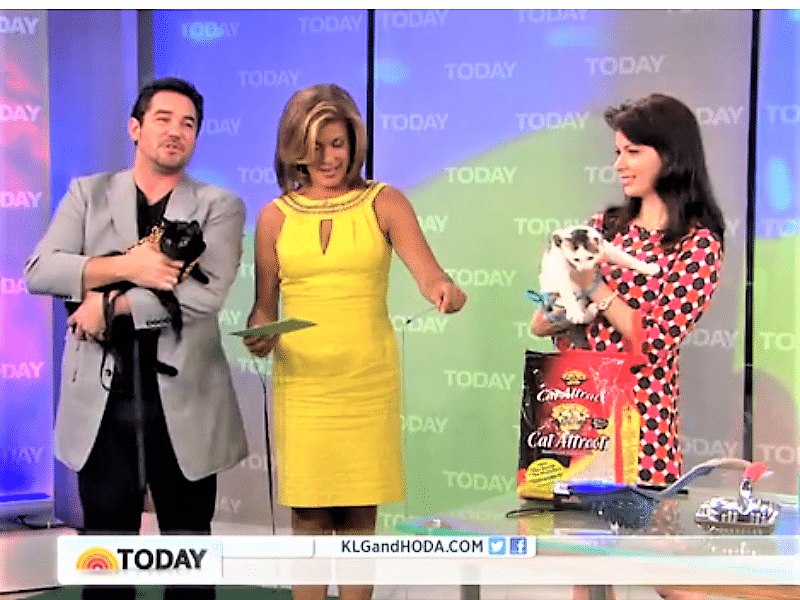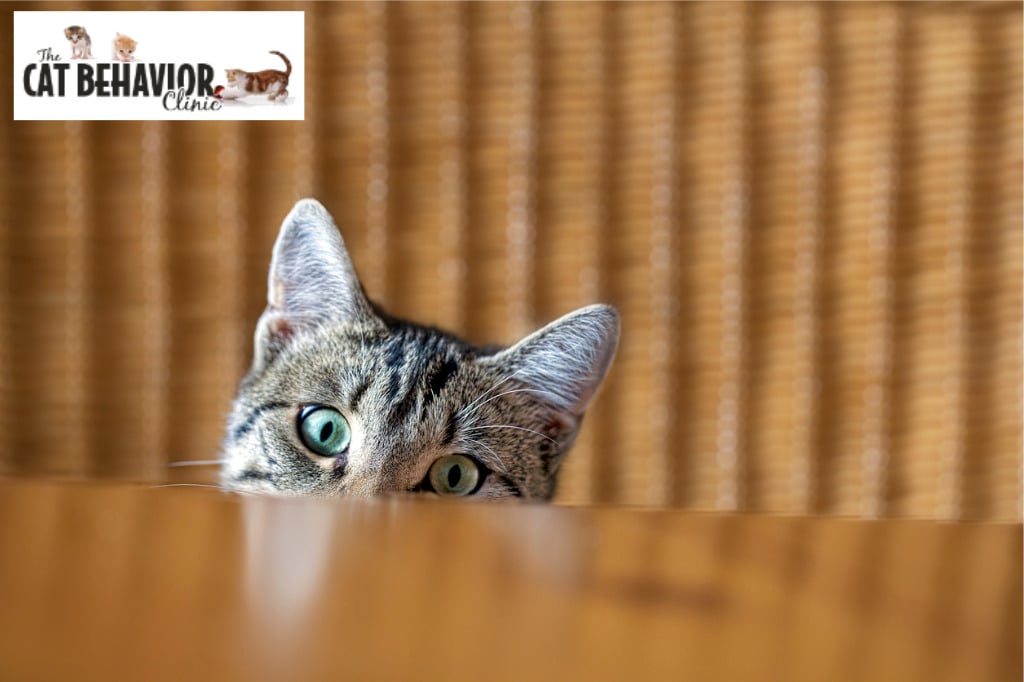Cat Defecating vs Middening?
It’s the Cat Behavior Clinic’s Specialty
33 Years in Practice the Clinic Specializes in the Scientific Research and Treatment of Cat Defecation Behavior Issues
Schedule a Virtual Defecation Appointment with Phi Zeta veterinarian and
Harvard and Oxford-trained Cat Behaviorist Clinic Team
Oxford-trained, Our Experienced, Licensed Veterinarian (Phi Zeta) and Certified Cat Behaviorist Team Have Helped Thousands of Cats in Over 30 Countries Defecate in the Litter Box Again (all with a Zoom appointment).
Join our long list of cat owners with cats defecating in the box 100% of the time. We’ve Helped Thousands of Cat Owners in over 30 Countries Get the Cat Poop Back in the Litter Box. View 350 solved case studies and client testimonials from around the world.

Photo: (Zoom Cat Defecation Appointment). 33 years in practice The Cat Behavior Clinic doctor and behaviorist have solved the “perplexing” cat defecation issue around the world from Los Angeles to Singapore. Mieshelle Nagelschneider studied animal behavior at Oxford University, and The University of Edinburgh – The Royal School of Veterinary Studies. Her animal behavior studies at Harvard University has also enabled her to help cat owners effectively solve their cat’s defecation issues in over 30 countries. The clinic provides consultations for defecation issues and goes beyond the obvious strategies and facts to solve your cat’s defecating issue.

Join the List of Hundreds of Cat Defecation Success Stories. Our New York Times Acclaimed Cat Behavior Science Author and Behaviorist on the Today Show Explains Why Cats Poop Outside the Litter Box (but will urinate in the box).

Award-winning Help: Phi Zeta Licensed Veterinarian and Cat Behaviorist Team: recipient of the “Gold Purr” Award and the “Seattle 2020 Business Award for Exemplary Businesses and People in the Field of Animal Behavior”. Mieshelle’s book is used to certify other cat “experts” you see today.
Zoom Appointment Update: We are scheduling our doctor and cat behaviorist team through August 31st. Through July 31st receive the study participation reduced fee for urination or defecation appointments. Become a part of Mieshelle’s 2-time Academy Award-winning cat behavior show production on Discovery Plus Channel (the most watched cat behavior show in the world with over 1 billion viewers).
Misconception #1: Middening is a Thing in Domestic
House Cats Just Like Wild Felids

It’s not. Much of the information about cat middening online is incorrect and should be removed. The truth is, it’s rare in house cats and extremely unlikely your cat is middening, but rather inappropriately defecating. This is most likely due in part to your cat’s feline evolutionary biology and a variety of external factors. We recommend you visit our defecation behavior page to learn more. If your cat is merely pooping inappropriately, you’re in luck! Pooping is much more easily solved than a middening problem. Please contact the clinic if you have questions regarding your cat’s defecation behavior at 503-267-8888.
Defecation Feline Behavior Wellness Consultation Program
Study Participation Reduced Fee Defecation Zoom Appointments Includes: 3 hours (or 3 Zoom appointments) during 4 week evaluation program period is $325.00 through July 31st. Our clinic has scientifically researched and developed effective defecation behavior therapies for over 2 decades for cats (and other cat experts you see today).

Cat Defecation or Middening Behavior Issues Are Solvable with
the Correct Scientific Behavior Changing Modalities
- Effective behavior plans begin with a clear understanding (this includes Qualitative Behavior Assessment) of cat gene-encoded behavior, learning and memory, and what a cat’s physiological and biological needs are.
- Behavior modification strategies applied once the defecation behavior has been analyzed and cause clearly understood.
- Strategies that take into consideration wild felid cat instincts and the learning process that may have contributed to forming a habit for the behavior is usually required to end the defecation behavior.
- Addressing possible social conflict and social learning in the cat’s environment to stop the behavior (external factors).
- Depending on the reason your cat is performing the defecation behavior, behavior strategies that involve sensitization and habituation may be applied.
- Associative learning can be an important part of your cat’s behavior plan depending on why the defecation behavior is occurring.
- Classical conditioning strategies can also be an important component to ending the behavior with specific defecating cats.
Our veterinarian and behaviorist’s experience and formal animal behavior studies ensure your cat will receive the highest level of appropriate care. They have been conducting defecation consultations since 1999 and helped thousands of cat owners solve their feline defecation behavior issues in over thirty countries. See our current outstanding Clinic Success Rate.
Considered the authority on the cat defecation issue, Mieshelle conducts hundreds of defecation consultations each year for over 33 years and lectures worldwide to veterinarians and shelter workers on this very “perplexing” behavior issue.
Cat Defecating vs. Middening?
Our Cat Behaviorist Explains
You won’t find much information on middening on the Internet, but sometimes a stool is not just a stool. Stools left around the walkways of the home or on your pillow might be a form of marking done by your cat to delineate territory. Middening is as different from its defecation counterpart, in both motive and effect, as spraying is from mere urination. Middening comes from a little-heard English word that (as we’re sure you know) derives from the Old Norse term for a dunghill or manure pile.
If you type in middening into a search engine, it will, maddeningly, try to correct your spelling to maddening. “Was it maddening you were looking for?” Just say no. The fact that the search engine thinks you can’t spell, and won’t give you much information on middening in any event, is an indication of how rare middening is, at least indoors (it’s more often observed in cats outdoors or wildcat hybrids). But when it does happen, middening can be synonymous with maddening!
Middening is a form of marking (technically, “non-spray marking”). More dominant or confident cats may midden to send territorial messages, while less confident or anxious cats may midden on a human’s things in order to mix cat and human scents into an anxiety-relieving cocktail. The latter is also called associative marking. Again, this is a rare occurrence and we rarely have come across a middening cat in the clinic’s history of consulting.
World-renowned Oxford-trained Cat Behaviorist Mieshelle Nagelschneider, The Cat Whisperer™️
Schedule an Appointment
Middening is not only a strong visual signal, visible from a distance
(unlike spray-marking), but a very strong olfactory signal as well.

Cats usually deposit their midden in very prominent locations so it’s not easily missed by other cats, a.k.a. the competition: in hallways or the frequently walked paths of household cats, near doorways leading outside or into certain rooms in the house, and on elevated locations like couches, on top of the dining room table, tables, beds, and the pillow on your bed. They often choose to midden on paths that lead to important resources or in locations that are important pieces of real estate (and about which a cat may feel competitive with other cats).
A rare issue for Indoor-only Cats: Many cats will simply defecate in these listed locations as well, but it’s more common for them to defecate in less prominent locations like the corner of a dining room. Typically middening is done away from the center of the home, and away from the nesting area’s food and cat beds. However, a dominant cat who wants to deter other cats may even midden territorially in front of litter boxes or food bowls.
In multi-cat households, one cat may feel an impulse to cover the odor of a housemate’s waste with his own. A sort of cherry on top, if you will. Cats who are insecure about their territory might even step outside the group litter box and leave stool right next to it. The cat’s motivation – marking – makes this middening rather than mere defecation.
Signs of mere defecation also include your cat trying to cover up the stool with nearby laundry, or claw marks in the carpet from their attempts to cover their stool. Cats will not cover a stool if they’re leaving it for marking purposes. They want it to be seen!
If you’ve got a rare middening problem, you will need a behavior plan to address the problem. And no surprise – cat behavior is highly complex, and solving it requires both expertise and specific, specialized information about your cat. That means a conversation with an expert. The information and help you receive from our cat behaviorist or veterinarian, is up to date in the latest studies of animal psychology and more specialized and involved help than what you’ve read on the internet.
Are you ready to give your cat and yourself the ultimate gift of happiness and mutual regard? Have you run out of ideas, or hope, and you’re at your wit’s end? Do you think you’ve tried everything?
We’re pretty sure you haven’t.
Frequently Asked Questions
All cat behavior solutions must take into consideration feline instincts and their evolutionary biology. The clinic has exclusive rights to Mieshelle Nagelschneider’s proprietary Cat Whisperer™ consulting, easy-to-implement C.A.T. Plan™ positive behavior modification, the most effective, comprehensive, and up-to-date system for curing any cat behavior problem.
Because every cat and environment is different, the plan allows for customized behavior techniques and environmental changes when needed – because cat behavior is not one-size-fits-all. Mieshelle has spent 20 years developing a method so effective that when clients follow it, their success rate is well over 90% (even higher for the most common issues).
Her science-based cat behavior book, The Cat Whisperer, has been featured in the New York Times and a best-seller on Amazon and published in 4 languages (Random House Publishing with co-writer Cameron Powell).
For cat behaviorists seeking certification, her book is a required curriculum by a number of cat behaviorist certifying organizations.
Love is born of mystery, and our cats are mysterious and loved in equal measure. But sometimes the greatest blessing of all is a bit of light thrown into a dark place. Mieshelle Nagelschneider holds that light. Allow her to share it with you.”– Gwen Cooper Author, Homer’s Odyssey: A Fearless Feline Tale, of Life With a Blind Wonder Cat (Random House), New York, NY
Veterinarian: “Over the course of many years, Mieshelle has developed and refined her unique ability to think like a cat. On numerous occasions I have witnessed the life-changing benefits Mieshelle’s techniques can bring to cats and their sometimes very frustrated owners.” – Veterinarian, Dr. James R. Shultz DVM, Portland, Oregon
Cat Behavior Veterinarian Referral from Dr. Lisa Berger DVM: “Despite all the disruptions, there have been no incidents of urination on the bed or the couch, and neither have been covered by plastic all week!” – Juanita H. Portland, Oregon
You have the African wildcat, your domestic cat’s ancestor, to thank for many of your cat’s “unwanted” cat behaviors. Learn more about this during your consultation to better understand and help your cat and solve its behavior issues. We often misunderstand cat behaviors. Once cat owners understand their cat instincts and biology, they can better understand why the behavior strategies work so well and can better apply them.
Mieshelle The Cat Whisperer™ has been the spokesperson and cat behavior expert for Comfort Zone, Arm & Hammer Cat Litter, and Cat Expert for Whiska’s International Media Tour Australia. Her cat behavior expertise is seen in the New York Times, The Today Show, NBC Dateline, MTV, Animal Planet, National Geographic, Discovery Channel, The Hallmark Channel, Modern Cat Magazine, Parade, Reader’s Digest, Cat Fancy Magazine, The New York Post, The Boston Globe, USA Today, This Wild Life, The Divine Cat, Real Simple Magazine, Salon.com, Petside, Freekibblekat, The Toronto Star, Canada Globe and Mail, Animal Rescue Site, The Daily Cat, Feline Wellness Magazine, Advisory Council Pet360.com, This Wild Life, The Cat Channel, Pets Magazine, The Circle, New Republic, The Sunrise Show, Yahoo.com, Herald Sun, Toronto Star, and countless others. See our Media Room below for the latest.
Feline behavior therapy is very different from canine behavior therapy and the approach to changing a cat’s behavior is even more unique. Cats do not display obedience problems like dogs. The help you need is not focused on physical or verbal behavior modification strategies, like dog training with a dog trainer present. All cat behaviorists conduct consultations by phone or video via Skype. Our behavior plans are specific to cats and still allow for the natural feline instincts, but when and where you want them displayed. We will cover the behavior plan during the phone or video consultation and offer follow-up over the course of several weeks for all of our consultation programs.
Call The Clinic Today at 503-267-8888
